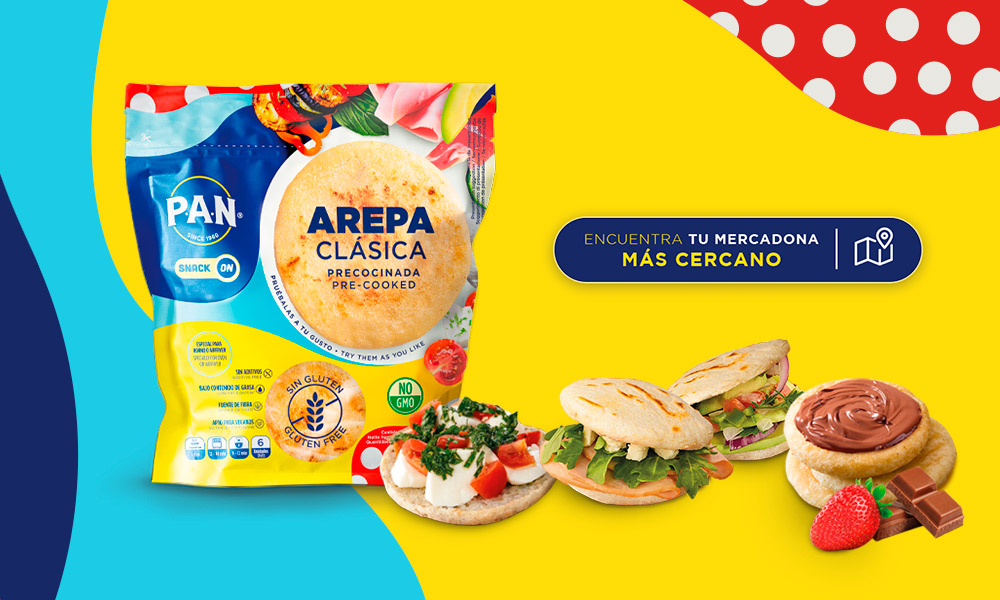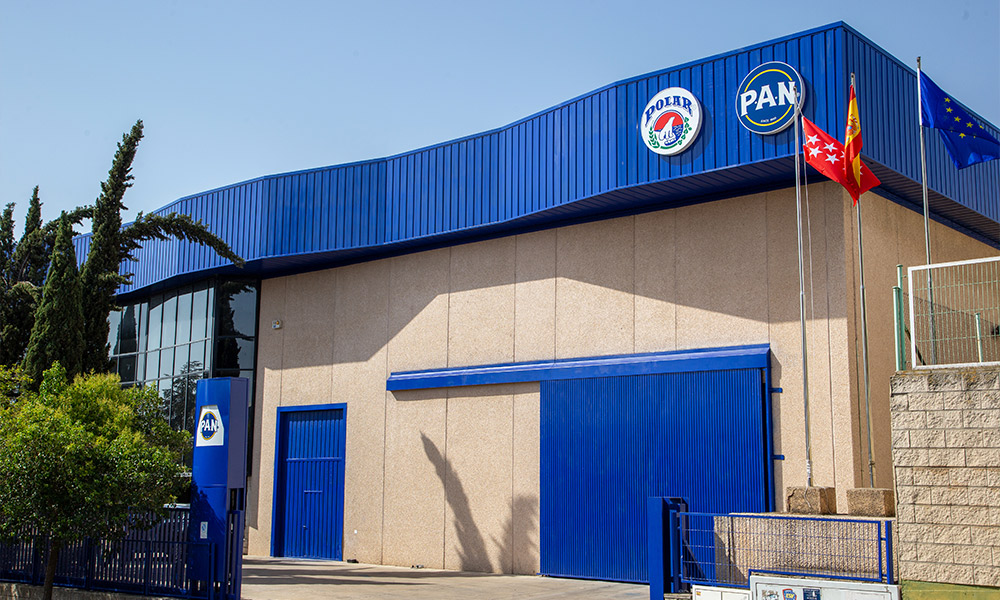This website uses cookies so that we can provide you with the best user experience possible. Cookie information is stored in your browser and performs functions such as recognising you when you return to our website and helping our team to understand which sections of the website you find most interesting and useful.
Tips and tricks about arepas and their preparation

Arepas have their origin in the natives of Venezuela and Colombia, the base of this dish is corn, which dates back more than 3,000 years in these lands. There are many hypotheses and debates on whether the origin is Venezuelan or Colombian, but to be fair the origin is indigenous and at that time the territorial divisions were not as marked as they are today, so it is very difficult to decree the exact place where the first arepa was made. We can affirm that it is a common heritage shared by both nations.
But the most important thing is to understand what arepas are and how they are made, this delicious food present in the tables of many families, as well as the tricks and tips for their preparation.
Origin and history of arepas
The origins of arepas are very uncertain, many historians claim that arepas are Venezuelan, others indicate that the arepa recipe is Colombian, what we can assure is that it is a very complete dish that is currently found in many homes.
Arepas are like bread, made with corn, water and salt. The original arepas were made with shelled corn which went through a grinding process, along with water and salt which gives it a comfortable texture to knead, this was the original recipe for arepas. With the commercialization, pre-cooked corn flour was introduced in the market, thus changing the process of making arepas, in a much easier way.
Some chefs affirm that the difference between the Colombian and Venezuelan arepas recipe is the way of preparation; Colombian arepas usually have oil and butter added, while Venezuelan arepas only have water and salt. There are some variables in the recipe, such as adding cow’s milk or goat’s milk instead of water, to give them more flavor and make them creamier.
In Spain, arepas have arrived quickly to the Canary Islands, due to the exchange that exists between these islands and Venezuela. This is why we can observe the Canarian arepas, which are usually served filled with cheese, fried plantains and other fillings.
How to prepare homemade arepas dough
Nowadays the way to prepare arepas is very easy and fast, that is why we will explain how to make arepas. There are numerous ways to make them, some more laborious than others, we will start with the recipe to make arepas from precooked corn. The first thing to do is to make the dough recipe, first put water in a bowl, big enough to be able to knead, a little salt, and add the precooked arepas flour to taste, little by little while kneading, until you get a consistent and homogeneous mixture, without lumps. Then make small balls of approximately 100 grams and flatten them with your hand, in the shape of a disk, place them in a frying pan with a little bit of oil and cook them for approximately 5 minutes, then turn them over and cook for 5 more minutes, until both sides have a hard shell.
There are recipes to make arepas with wheat flour, in Venezuela they are known as Andean arepas, the recipe is very similar to the one with precooked corn flour, but an egg and a little liquid milk are added. After having the dough ready, let it rest and cut into slices, then place them in a frying pan or budare until browned on both sides. We can elaborate these arepas of wheat flour without eggs, only that we have to add a little butter as a substitute.
Another variable for the production of arepas is the recipe of arepas made with corn meal, the difference with the first one is that the elaboration of these arepas is with non-precooked corn meal, so the process is longer, the corn must be shelled and previously pillared, for this we use large and heavy mortars. Once we get to grind them, we add water, salt and butter to give a moldable texture. Nowadays they still make arepas with normal corn meal, it is just a little more difficult, but they are more similar to the original ones.
TYPES OF FLOURS WITH WHICH YOU CAN MAKE THE DOUGH
The most common corn meal flour for the elaboration of arepas is the precooked corn flour, there are several brands in the market, but PAN flour is the leading brand. We can also make arepas with wheat flour, cassava flour, pumpkin, plantain, which use the same principle of creating a consistent dough, but with a different base.
In the market there are already many variables of flour, there are fine corn flour for arepas, corn flours with rice or wheat additives, but we can always make arepas with raw corn flour, as we have explained above.

HOW TO STORAGE AREPAS
Arepas can be stored after cooked, in the refrigerator or in the fridge, depending on the use they are going to be given. As we have mentioned, the recipe for arepas dough is simple, and they can be kept in the refrigerator once made, for 3-4 days.
Delicious and healthy recipes for filling arepas
Arepas are usually seen as a bread, so the versatility of this food is infinite. They can be eaten on their own, as side dishes, stuffed, etc. They are easy to combine, nutritious, high in fiber and rich in vitamins and minerals.
Here you can find several arepas recipes.
BENEFITS AND NUTRITIONAL INFORMATION OF AREPAS AND THEIR FILLINGS
Arepas have a variety of recipes, which will depend on the consumer. But additionally they have an endless number of fillings that we will explain. These stuffed corn arepas are the perfect dish for breakfast or dinner, since they contain the necessary nutritional contributions and also provide satiety at mealtime.
Stuffed arepas are usually the best known way to eat them, you can fill them with ham and cheese, prepared meats, eggs or some more original and different combinations such as white cheese with black beans (known as Domino); chicken, avocado and mayonnaise (the famous Reina pepiada); shredded meat, fried plantain, white cheese and black beans (the popular pabellon); each of these fillings has its history and great nutritional contributions.
The filling of arepas varies from cuisine to cuisine and adapts to all tastes, there are combinations that are adapted to the country, for example, in Spain we have arepas stuffed with Iberian chorizo or black pudding, all are really rich.
There are many recipes for arepa fillings, one of the most common is the Reina Pepiada, the base is shredded chicken, avocado and mayonnaise, it is a combination that has high nutritional value because it contains the chicken protein and the good fat of the avocado, in addition to the creaminess that gives the mayonnaise, this can be replaced by yogurt if we have a low calorie diet. Another very common arepas filling is fresh white cheese, there are several types depending on taste, but they are usually filled with telita cheese, mozzarella, guayanes, costeño, among others.
Variations of arepas according to the countries where they are eaten
Depending on the country the presentation changes, for example, in Colombia arepas are usually very thin, and served with the filling on the outside, while in Venezuela they are a little thicker and the filling is served inside the arepa. In Panama they have no filling and are called changa or tortilla, the former being made with new corn and the latter with old corn.
WHICH ARE THE BEST AREPAS AND WHY.
Other variations in the preparation of corn arepas are the way they are made, we can make fried arepas, baked, roasted or the best known way, grilled arepas. It is hard to decide which is the best preparation, since each one has its own attraction, but whatever the way they are prepared, they will surely be delicious.

Where to buy homemade and frozen Venezuelan arepas in Madrid
Currently it is possible to buy the Venezuelan arepas ready, is the case of the online store All of P.A.N., which has already put on sale on its website this product, we can also get the arepas ready to make, of this same brand, in the surfaces of Carrefour. You only have to bake or fry them, and you will be able to enjoy a very easy and quick typical dish.
As expected, this versatile and native product is present in many restaurants, points of sale and in the homes of many Spanish families. Due to its ease and variety of combination it is a food that can be consumed daily, it serves to cover all the moments of the meal: breakfast, snack, dinner; since it provides satiety and adequate nutrients.
You just have to try them and add the filling of your choice!





